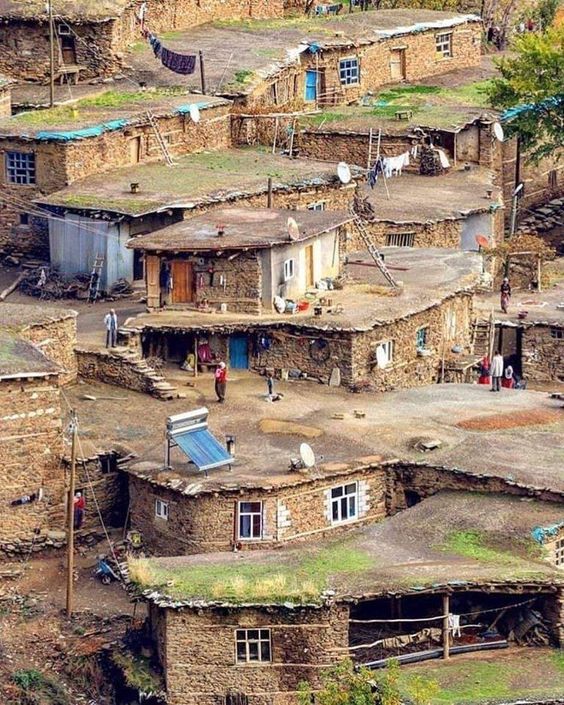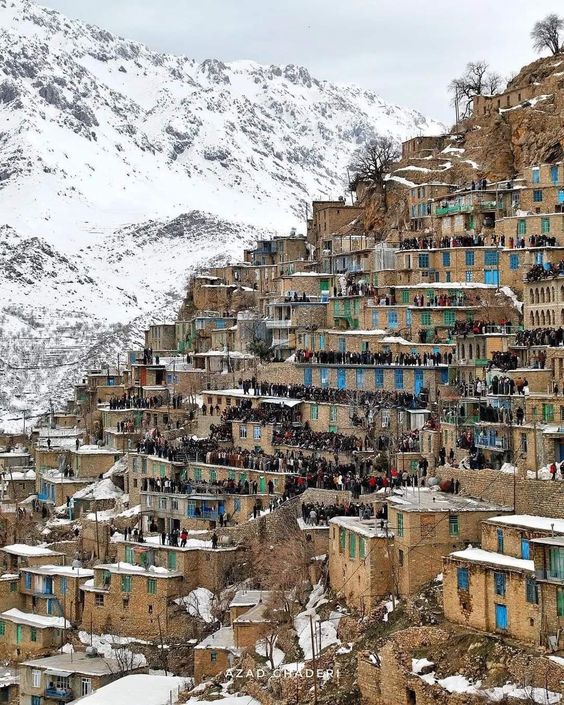Tucked away in the rugged landscapes of Eastern Turkey is the small town of Hizan, which belongs to the province of Bitlis. The village houses of Bitlis Hizan were typically constructed from locally sourced stone and wood, these dwellings are adapted to the mountainous terrain and harsh climatic conditions. They’re designed to withstand severe winters, with thick walls, small windows, and flat roofs to bear heavy snowfall.

One of the distinguishing features of Hizan houses is the use of a multi-level design, often with the livestock occupying the lower levels and living quarters above. This not only provides warmth from the animals during cold months, but also helps preserve heat as the living spaces are elevated from the ground. Additionally, it ensures an efficient use of space in an area where flat land is at a premium.

The aesthetics of these houses encompass both function and tradition. The exteriors are generally simplistic in decoration, mirroring the practical emphasis of the design. However, traces of cultural artistry can still be found in details such as intricately carved wooden doors, shutters, and balconies, as well as occasional decorative motifs in stonework that adorn the facades.

Hizan’s homes are historically built without the use of nails or metal fasteners. Craftsmen called “ustas” join wooden elements using traditional interlocking techniques that provide resilience and flexibility to the structure. This not only testifies to the artisanal skill but also contributes to the seismic durability of the buildings, a necessary feature in an earthquake-prone region.

Another unique aspect is the social significance that these houses hold within the community. They’re not just places of residence; they also act as social hubs where community rituals and hospitality traditions play out. The warmth and generosity of Hizan villagers are well-exemplified in their homes, which act as intimate venues for both family life and communal gatherings.

